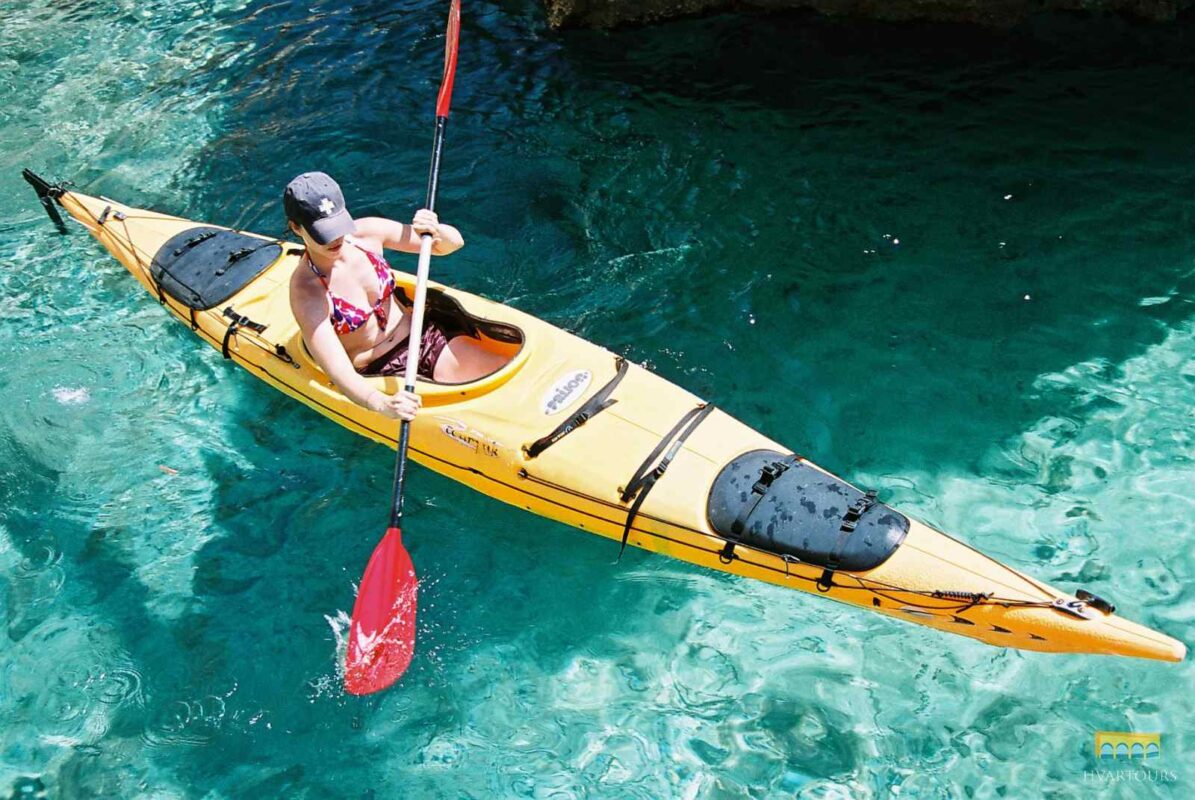Ocean kayaking for beginners is not just a recreational activity; it’s a thrilling adventure that connects you with the beauty of nature, the rhythm of the waves, and the fascinating marine life. For those stepping into this world for the first time, the idea of gliding through open waters can be both exhilarating and intimidating. However, with proper guidance and preparation, your journey into ocean kayaking can be both safe and incredibly rewarding.
This article will provide essential insights, tips, and techniques to set you on the path to becoming a confident ocean kayaker. Whether you are looking to embrace the calm of tranquil waters or seek the thrill of riding ocean swells, understanding the basic principles and preparing adequately will ensure that your experience is memorable. Let’s dive deeper into the exciting steps and intricacies of ocean kayaking.
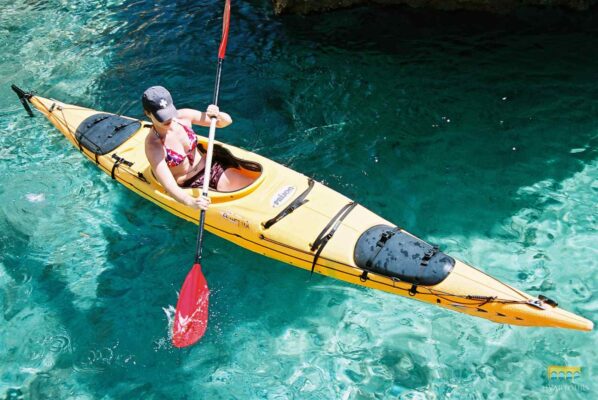
Understanding the Basics of Ocean Kayaking
Before you embark on your ocean kayaking journey, it’s crucial to understand what makes ocean kayaking unique compared to other types of kayaking. This section will explore various aspects such as equipment, safety measures, and environmental considerations, which form the foundation for any beginner.
The Equipment You Need
Selecting the right equipment is vital for ensuring comfort, safety, and performance while kayaking in ocean waters. Beginners often feel overwhelmed by the variety of kayaks, paddles, and accessories available, but a few basics can guide your choices effectively.
First and foremost, you’ll need a suitable kayak. Ocean kayaks are generally longer and sleeker than their river counterparts, designed to handle waves and wind better. Look for a sit-on-top kayak if you value stability over speed or if you’re planning to paddle in warmer waters since they are easier to get in and out of. On the other hand, sit-inside kayaks offer protection from the elements, making them more suitable for chilly climates.
Next, consider paddles. A good paddle should be lightweight yet durable, allowing you to maneuver efficiently without tiring quickly. Many paddles come with adjustable lengths, which can be beneficial depending on the width of your kayak. Make sure to choose one that feels comfortable in your hands.
Finally, don’t overlook safety gear. A personal flotation device (PFD) is non-negotiable when venturing into ocean waters, as conditions can change rapidly. Additionally, a whistle, a spare paddle, a first-aid kit, and a waterproof bag for your belongings will enhance your safety and preparedness.
Safety Protocols for Beginners
Safety should always be at the forefront of your mind when engaging in ocean kayaking. Understanding and adhering to safety protocols will significantly reduce the risk of accidents.
Start by familiarizing yourself with weather conditions before heading out. Wind speeds, tide patterns, and potential storms can all impact your kayaking experience. It is advisable to check local forecasts and be aware of changing conditions while on the water.
Additionally, never kayak alone, especially as a beginner. Having a partner or group can be invaluable in case of emergencies. If something goes wrong, having someone with you increases the chance of getting assistance swiftly.
Lastly, take a kayaking course if possible. Many facilities offer lessons specifically tailored to beginners, where you can learn about safety measures, rescue techniques, and essential paddling skills from experienced instructors.
Marine Environment Awareness
As an ocean kayaker, you will be a part of a delicate ecosystem. Developing an awareness of marine environments is essential not only for your safety but also for protecting these natural wonders.
Learn to identify various marine species you may encounter, including fish, birds, and seals. Becoming familiar with their behaviors encourages respect for wildlife and enhances your overall experience.
Moreover, understanding the currents and tides is crucial. Tides can create strong currents that might pull you away from your intended path, so being aware of tidal schedules and how they affect your paddling route can prevent unforeseen challenges.
Lastly, practice responsible kayaking by following “Leave No Trace” principles. Avoid disturbing wildlife, do not litter, and minimize your impact on the natural surroundings. Promoting eco-friendly practices ensures that future generations can enjoy the same breathtaking experiences.
Essential Skills for Ocean Kayaking
Once you have a grasp of the necessary equipment and safety protocols, it’s time to hone your kayaking skills. This section will delve into the essential techniques that every beginner must learn to navigate ocean waters confidently.
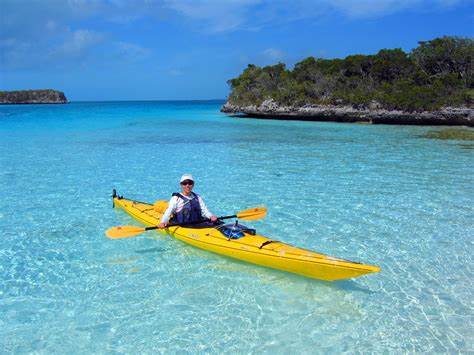
Mastering the Basic Paddle Stroke
A fundamental skill that every kayaker must master is the paddle stroke. This technique involves using your core muscles rather than solely relying on your arms, which can lead to fatigue.
Begin by sitting tall in your kayak with your feet firmly positioned on the footrests. Hold the paddle with both hands, ensuring that there’s an equal distance between your hands and that they are shoulder-width apart.
To execute the forward stroke, plunge the blade of the paddle into the water near your toes. As you pull it back towards your hips, rotate your torso and engage your core. This technique maximizes power and efficiency while minimizing strain on your arms. Practice makes perfect; spend time refining your stroke technique until it becomes second nature.
Turning Techniques
Navigating turns is another vital aspect of ocean kayaking. Unlike calm lake waters, ocean currents and waves can complicate turning, so mastering these techniques early on will build your confidence.
The sweep stroke is an effective method for turning your kayak in either direction. Start by executing a standard forward stroke to gain some momentum. When you’re ready to turn, dip the paddle blade deep into the water at your hip and sweep it outward in a large arc.
For tighter turns, you can use the stern draw stroke. Position your paddle close to the stern of the kayak and draw it towards your body while keeping your other hand stable on the opposite side. This technique allows for quick directional changes, especially in challenging conditions.
Rescues and Self-Rescue Techniques
Inevitably, situations may arise where you find yourself needing to recover from capsizing. Knowing how to perform self-rescue techniques will boost your confidence and ensure your safety.
Start with the wet exit. In the event of a capsize, remain calm and position yourself to exit the kayak smoothly. Use your hands to push off the kayak’s edge, letting your body glide into the water. Once you’re in the water, swim clear of your kayak before attempting to reboard.
Reboarding involves flipping your kayak upright, then using the paddle for support as you climb back into your seat. Alternatively, if you’re paddling with a partner, they can assist you in a T-rescue, stabilizing your kayak while you re-enter.
Familiarizing yourself with these rescue techniques will empower you to handle unexpected incidents thoughtfully and efficiently, making your ocean kayaking adventures much safer and more enjoyable.
Planning Your Ocean Kayaking Adventure
As a beginner, planning your first ocean kayaking adventure is an exciting yet critical step. Choosing the right location, understanding launch sites, and preparing for your outing will help ensure a smooth experience.
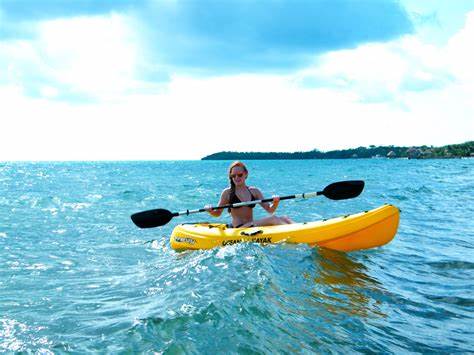
Selecting Suitable Locations
While the allure of vast ocean expanses is appealing, selecting beginner-friendly locations is essential. Start with areas that offer calm waters, protective coves, or designated kayaking zones.
Many coastal regions feature rental shops where staff can recommend safe spots for beginners. Consider places with easy access to shorelines, as this will allow for quick exits should conditions become unfavorable.
Research local regulations regarding boating and diving activities, as many regions have restrictions in place to protect wildlife and ensure safety. Engaging with local kayaking communities online can also yield insight into the best beginner-friendly locations.
Preparing for Launch
Preparation is key to a successful kayaking journey. Before launching your kayak, ensure that all your equipment is properly secured. Check that your PFD is fastened, and equipment like paddles, dry bags, and safety gear are within reach.
Choose a suitable launch site, ideally a sandy beach or a designated area free of obstacles. Familiarize yourself with the shoreline and surrounding environment, as this can aid in navigating back if needed.
When you’re ready to launch, position your kayak parallel to the shoreline, ensuring you’re facing into the wind. Sit down gently and use your legs to stabilize the craft as you push off. Paddle slowly at first, allowing yourself to adjust to the water’s rhythm.
Understanding Tides and Currents
Understanding tides and currents will greatly influence your kayaking journey. Tides fluctuate regularly, affecting water levels and flow patterns. Learning how to interpret tide charts will prepare you for your adventure.
Current knowledge is equally important as ocean currents can vary in strength and direction based on factors like wind, geography, and time of year. Pay close attention to how currents might affect your desired route and plan accordingly.
Timing your outings around low tides can simplify navigation, as currents are typically less powerful during these periods. Ensure you have a map or GPS to help you track your position, especially if you venture farther offshore.
Enhancing Your Ocean Kayaking Experience
Once you have settled into the basics of ocean kayaking, it’s time to elevate your experience. From exploring marine ecosystems to participating in group excursions and photography, countless opportunities await.
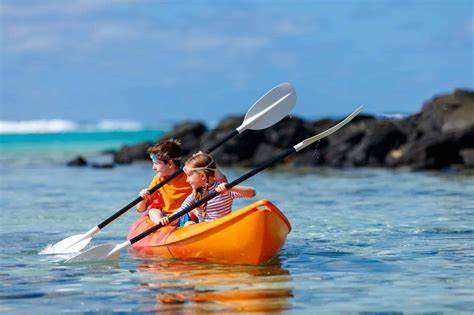
Exploring Marine Ecosystems
Ocean kayaking offers a front-row seat to view diverse marine ecosystems. It’s a chance to engage directly with nature while respecting its boundaries and inhabitants.
Consider joining guided tours focused on marine biology, where experts can share insightful information about the flora and fauna you encounter. Learning about coral reefs, kelp forests, and tidal pools will deepen your appreciation for the oceans and enrich your kayaking adventures.
You could also bring along snorkeling gear to explore underwater ecosystems up close. Many areas offer crystal-clear waters filled with vibrant marine life, providing unforgettable experiences beneath the surface.
Group Kayaking Excursions
Participating in group kayaking excursions can amplify your experience significantly. Not only does it provide a social aspect, but kayaking with others fosters teamwork and camaraderie.
Many local clubs or organizations host regular group outings, catering to individuals of varying skill levels. Joining these groups can introduce you to seasoned ocean kayakers who can share valuable tips and tricks based on their own experiences.
Group excursions also enhance safety—having multiple people on the water means assistance is readily available should anything go awry. Additionally, embarking on organized trips can lead to discovering hidden gems along the coastline that you might not find on your own.
Photography Opportunities
The mesmerizing beauty of ocean landscapes presents fantastic photography opportunities. Capture the essence of your ocean kayaking adventure by documenting the stunning sunsets, marine wildlife, and scenic coastlines from your kayak.
Investing in waterproof camera gear allows you to take photos without worrying about damaging your equipment. Consider bringing a GoPro or a similar action camera to capture dynamic shots while you paddle.
Documenting your journey through photography isn’t just a means of preserving memories; it also invites you to look closer at your surroundings and appreciate the intricate details of the marine environment.
Conclusion
Ocean kayaking for beginners is an exhilarating journey filled with discovery, adventure, and connection to nature. By understanding the basics of equipment, safety, kayaking techniques, and planning your trips, you’ll set the stage for a fulfilling experience on the water.
With patience and practice, you’ll develop the skills required to navigate the oceans with confidence. Embracing the marine environment, participating in group excursions, and capturing beautiful moments through photography will further enrich your ocean kayaking adventures.
As you embark on this new journey, remember that every expert was once a beginner. Stay curious, respectful, and committed to learning, and you will find yourself not just paddling through the water, but truly immersed in the splendor of the ocean.

